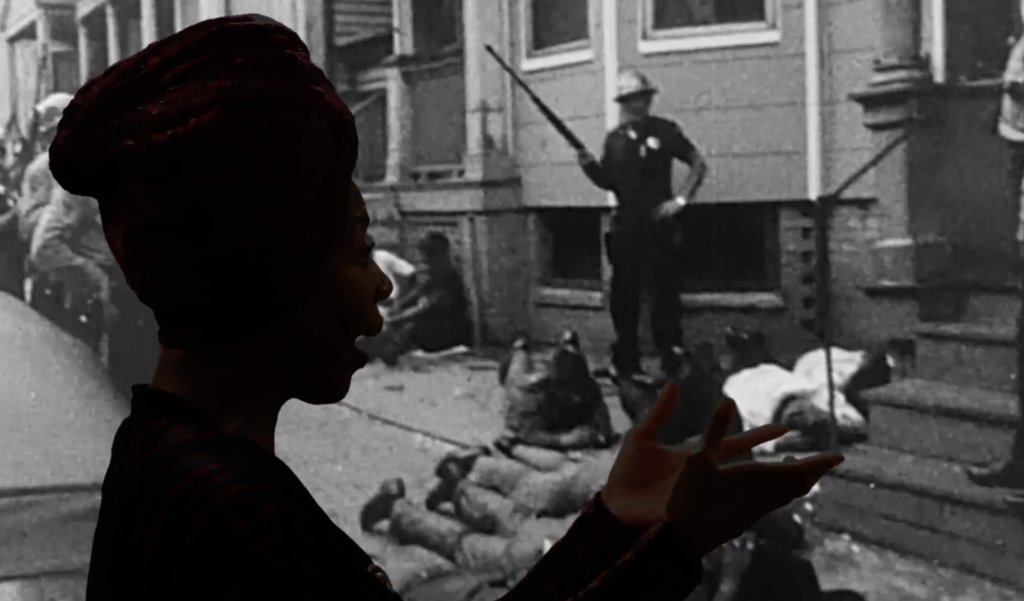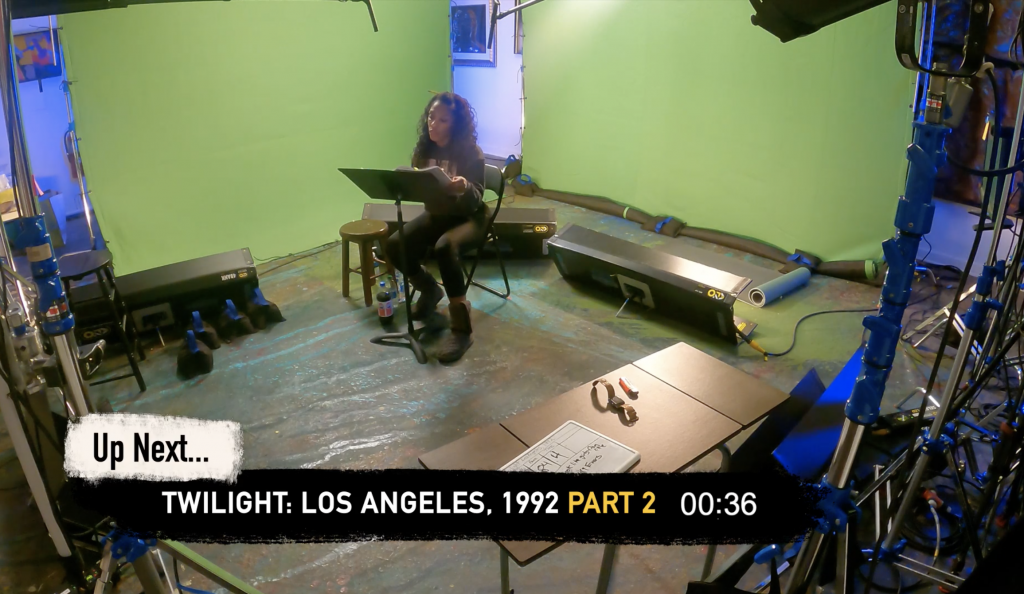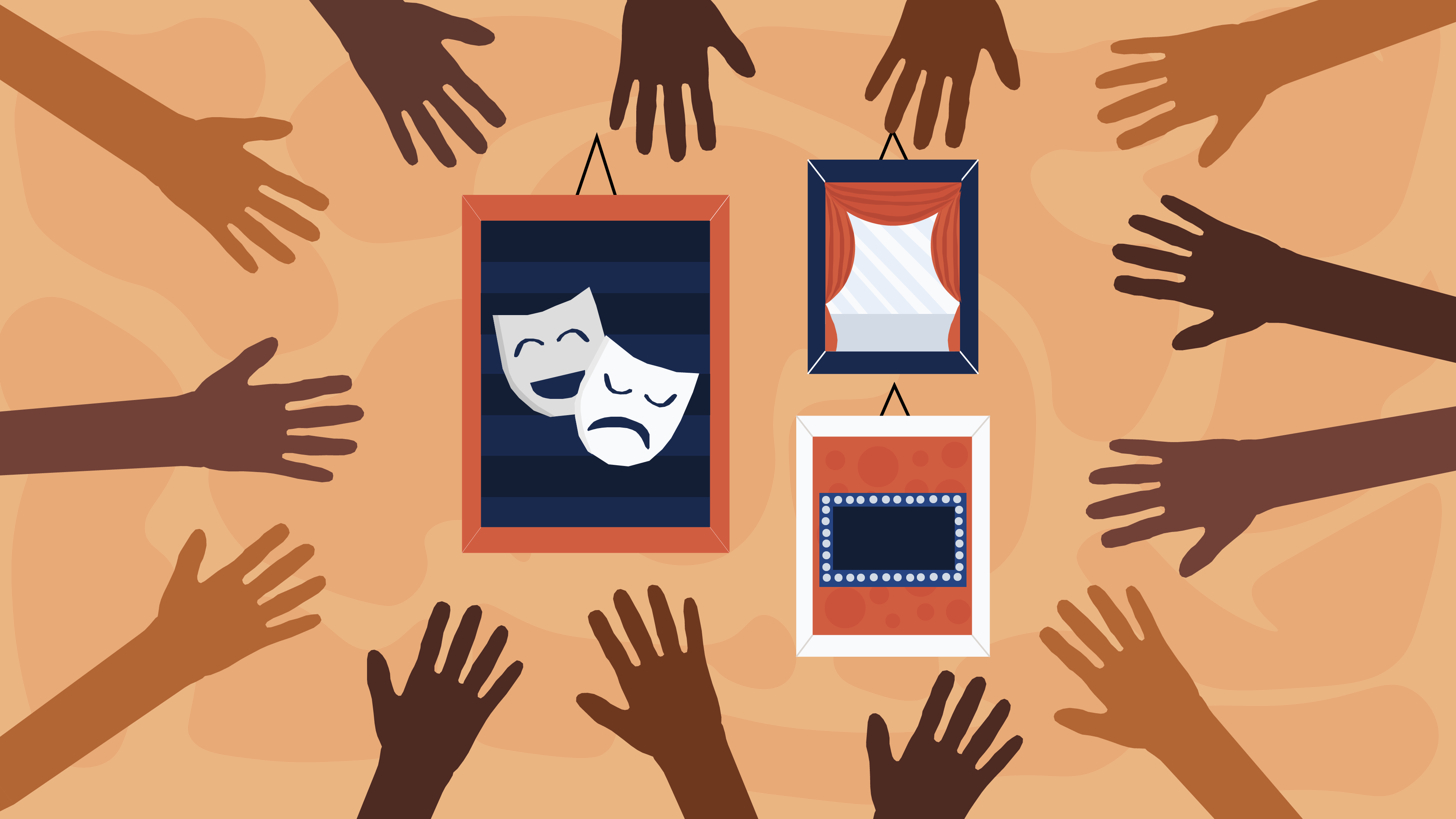Staged Action
Staged Action
Inequality is pervasive in the visual and performing arts, but the pandemic has pushed organizations toward more inclusivity in the arts for the communities who need it most.

s a city, Syracuse is not lacking in art. It is home to numerous organizations that reflect the full spectrum of visual and performing arts — everything from theater and music to fine and folk art — represented at institutions varying from the single-room art gallery to multi-million dollar venues.
Add to that Syracuse University, an academic institution that draws thousands of scholars, students, artists, and professionals from around the world, and the city becomes, like so many spots in Central New York, an area ripe for culture and the dialogue surrounding it.
But an unfortunate reality persists. The arts, like so many other sections of society, remain closed, if not slightly out of reach, for many people, particularly those from underserved communities along racial, economic, and gender lines.
Marguerite Mitchell, education director of Syracuse’s Redhouse Arts Center, said this disparity in the arts is so commonplace that many people believe it to be part of the art itself.
“There is this perception that art is this elite thing,” Mitchell said. “It’s seen as this very high status, high class thing. And the more we can challenge that notion, the better.”
But according to a study conducted by CNY Arts, a not-for-profit organization that distributes grants and funding to artists and organizations throughout the region, arts and culture activities like concerts, theater performances, and film events are more important to Central New Yorkers than sports. Our favorite football teams might offer us a sense of victory and camaraderie, but it seems museums, theaters, and festivals can offer so much more.
This sentiment is echoed by arts organizations looking into issues nationally. A study conducted by Americans for the Arts — an organization that aims to “build recognition and support for the extraordinary and dynamic value of the art” — says that 63% of people believe that art had a positive impact in improving their community. Furthermore, the study suggests that access to culture has a financial impact, reporting that “75% of diverse, low-income, and highly disadvantaged neighborhoods saw reductions in income disparity that directly correlated to the formation of new arts organizations within that community.”
The pandemic has been extremely detrimental to the arts in Central New York. CNY Arts estimates that as much as $15 million will be lost in the arts throughout the region, with individual artists losing as much as $17,000 each from their endeavors. From the point of view of many practitioners and artistic professionals, the closure of arts venues and the cutting of funding has only exacerbated the problem of inequality in the arts.
So what can the artists, the community, and the organizations do about this problem? Artists and their supporters suggest the answer lies in addressing two key components: Access and invitation.
Arts in education
Redhouse Arts Center, which moved to a brand new downtown space in 2018, was hit hard last spring by the COVID-19 shutdown. They were forced to lay off most of their staff, including newly appointed artistic director Hunter Foster who exited the theater program in January.
Mitchell, one of seven employees still on staff, said the theater company was able to keep its education programs going, allowing students to participate in socially distanced camps throughout the summer.
Mitchell said that as an educator she knows firsthand how important the arts are in the development of young people. Many early experiences came from participating in plays, but Mitchell said arts programs throughout the region have historically had trouble finding financial support that can provide access and opportunities especially to younger students.
“The more that we give those [opportunities] to children as early as possible — those formative foundational experiences — it’s not only in helping them develop as an artist, but (give them) human experiences that I think are a necessary part of a child’s development,” Mitchell said.
Mitchell said that her students were eager to talk about the Black Lives Matter movement during the summer sessions, and that the theater gave them the opportunity to talk in a safe and creative space.
Although education is one component that aims to make the arts more equitable, the education system itself can enhance the problems already taking place.
SU musical theatre junior Spencer Lombardo said that he often felt uncomfortable as a Black man in the drama department because of the subtle ways in which faculty were telling him to be less “himself.”
“It was like, ‘Oh, don’t sing that way,’ or ‘Don’t talk that way,’” Lombardo said. “It felt like people were attempting to coax me away from finding the rich, beautiful Blackness, because they liked the Spencer that was, I guess, more palatable for white people.”
Lombardo recalled seeing students stand against racism on campus as part of the #NotAgainSU protests during the fall 2019 semester as the pivotal moment for him to speak up as a Black artist. He said that it was clear that his department was casting Black actors in roles that were not fully fleshed out, but rather as the token character of color.
Lombardo and his classmates began to develop a series of demands over summer 2020, and took the list to the administration of the drama department when they returned to campus in the fall. The list includes demanding Black acting faculty members and the option for Black acting students to choose material that they want to work on from playwrights of color.

The administration has been receptive, Lombardo said, and have held weekly meetings with the students to discuss the situation. Also he notes that since beginning the dialogue that he and his classmates have already seen changes, including the department opening a faculty search for a Black acting instructor in the spring semester.
“I’ve had people share with me that they felt like their experience was generally less detrimental to their health and safety than before,” Lombardo said, “which is a change, and that’s good.”
Art imitates life
Kyle Bass, Syracuse Stage associate artistic director, believes that there is more to be done at arts organizations than just “programming the one Black play in February” during Black History Month.
Bass, who has taught playwriting at SU, believes that art itself has the power and responsibility to counter the inequalities within communities.
Although the pandemic has delayed his latest play salt/city/blues until 2022, Bass is eager to share it with Syracuse audiences because of how it reflects the community in which they live.
Set within the fictional Salt City, Bass’ play features characters dealing with gentrification of their neighborhoods. The arts — music in particular — are important to Bass’ characters, giving them “rich interior lives.” The play explores a “complicated history around race, class and urban renewal,” according to a release from Syracuse Stage.
A 2015 The Atlantic article noted that “Syracuse has the highest rates of both black and Hispanic concentrations of poverty in the nation.” Most experts point to the construction of Interstate 81 in the 1960s as a pivotal moment in the segregation of the city, and the fictional city in Bass’ play operates under similar stressors. But Bass also found in his research that Syracuse was home to a large number of white urban residents living below the poverty line. This disparity was of particular interest as he wrote salt/city/blues.
“I was interested in looking at flipping the script here,” Bass said. “You know, what do issues of class really look like? Urban renewal has historically come at the price of something. [It] has frequently meant making the urban area more conducive to — how shall we put this — suburban money and interest to bring people back into the city, in a commercial sense.”
The same goes for the arts, Bass said, because the institutions that provide culture for a community can often act as “barriers to access” because of the steep price of tickets or the limited information available about how to gain entry into programs or employment. When the staff of institutions and companies are largely white and male, “the lack of diversity inside the organizations themselves,” Bass said, leads to another “invisible barrier.”
“You can have access to something, or an organization can say all are welcome,” Bass said “But if you get there and nobody there looks like you, that can be problematic.”
It’s a dilemma that Bass witnessed while working on a piece of documentary theater with military students at SU in 2017.
For the piece called Separated, Bass interviewed a young Black man who had grown up in Syracuse, but never thought he would be able to attend the prestigious university in his own backyard. The man said he and his South Side friends believed that SU was “not for us.” He was recruited by the military out of high school and eventually wound up at SU after his service.
“They’re in the shadow of the Dome, literally … and yet it was out of reach,” Bass said. “The irony, of course, is that he eventually winds up there, but first he has to go to the military.
“The military is a microcosm of society — and so he experiences the same sort of issues of racism and prejudice in the military the way he experienced when he dared to step out of the South Side.”
Organizational support
CNY Arts has taken steps to help fund the arts in underrepresented communities with a couple different approaches, like using focus groups and a “fly on the wall” approach to engage with communities and listen to their needs from a funding standpoint. The organization also uses a “community peer” model for grantmaking, where members of these communities are the ones making the decisions where the funding is going.
Syracuse’s Everson Museum of Art is looking to correct inequity within the visual arts community through deaccessioning, or selling permanent collection pieces to raise money.

Recently, the museum sold a Jackson Pollock painting from its collection and is using the proceeds “to establish a fund for acquiring works created by artists of color, women artists, and other under-represented artists,” according to the museum’s website.
After receiving a reported $12 million for the Pollock at auction, the institution seems to be making good on it’s promise: Recent purchases for the museum’s collection include work by Los Angeles-based artist Shinique Smith, and Portland-based artist and 2020 Guggenheim fellow Ellen Lesperance, as well as work by local artists Sharif Bey and Ellen Blalock.
Syracuse artist Jaleel Campbell, who returned to the area because of the COVID-19 pandemic, recently opened his first solo exhibition at the Everson. The show explores Campbell’s family history — his grandfather was a former slave — through painting and doll-making.
“Artists are an important part of our community,” said Everson curator Steffi Chappell. “We do feel having local artists in our collection helps deepen our connection with the community which is something we always strive to do.”
Looking forward
While the opening of performance venues is on the horizon, local theater companies have been streaming shows and community dialogues to continue to bridge the gap between their institutions and the communities they serve.

Bass said he has noticed “less talk, more action,” when it comes to diversifying the people within arts institutions and the type of art being produced. His own play from 2018, Possessing Harriet — which dramatizes the true story of Harriet Powell, a Black woman who escaped enslavement from her white captor while visiting Syracuse — was a major hit for Syracuse Stage; Bass estimates that 10,000 people saw the show during its run. The play is a testament to what communities crave when it comes to local art: shows and exhibits that reflect the place they’re from and the issues that impact their lives.
In February, Syracuse Stage streamed a production of Anna Deveare Smith’s solo play Twilight: Los Angeles, 1992, which documents the LA riots that occurred after the acquittal of the white officers accused of beating Rodney King.
Syracuse Stage artistic director Robert Hupp said that he hoped the show would shed some light onto similar events in our nation’s recent history — like the killing of George Floyd — as well as issues that are relevant to the Syracuse community. Joining artists from the show, Hupp facilitated talk backs and dialogues in conjunction with the performance.

For some, it seems appropriate that theater works seem to be at the forefront of making real change — Bass calls it “our most public art form… It is us watching us.”
Redhouse’s Mitchell said that the Syracuse theater community in particular has been more open and inviting than any other she has been a part of. When Mitchell began working at Redhouse a decade ago, she was the only woman in a leadership position. Recently, she’s seen a push towards correcting some imbalances of the past. In the last decade, more women have entered leadership roles at the arts center, she said.
Deconstructing The Divide
Ultimately, the pandemic has prompted Mitchell and her colleagues to reflect on how they can better serve the community in which they exist. Most of their work during this time, she said, has been about listening and planning for the future.
“[The pandemic] has forced everyone to pause and really lift the hood on things and look,” Mitchell said. “There has been a lot of progression that’s happened over the last five years, but I think that it’s nice to happen faster, and I think that it might now.”

